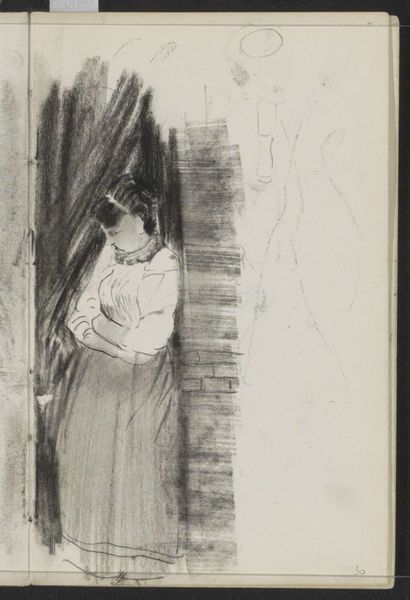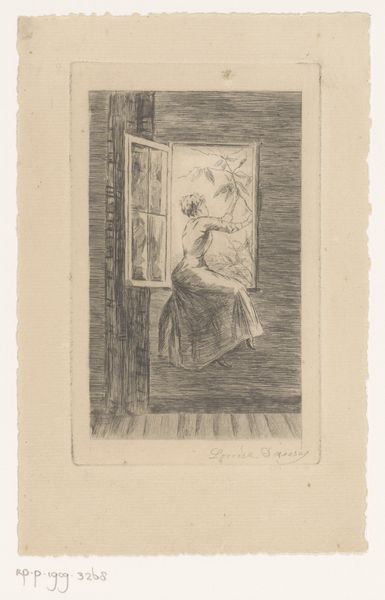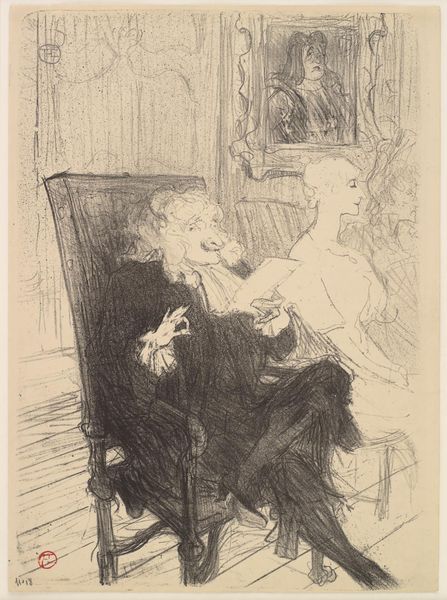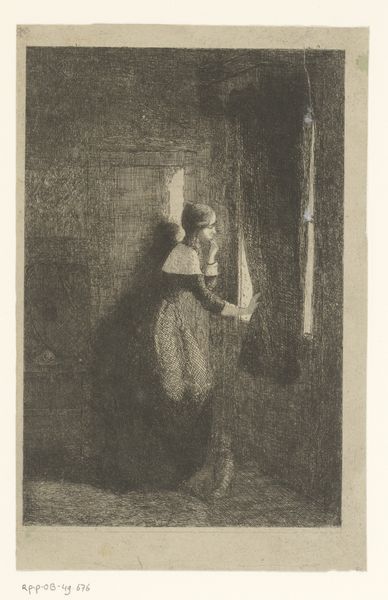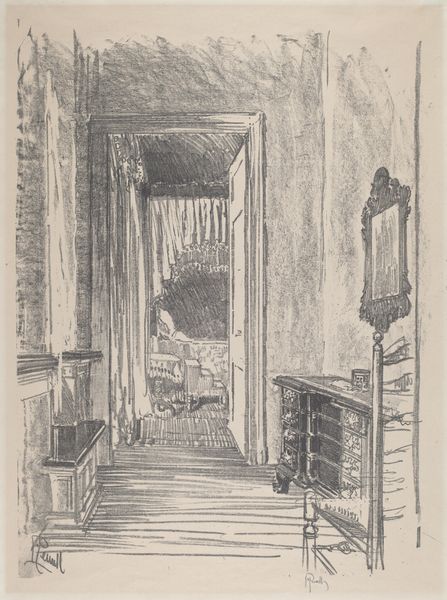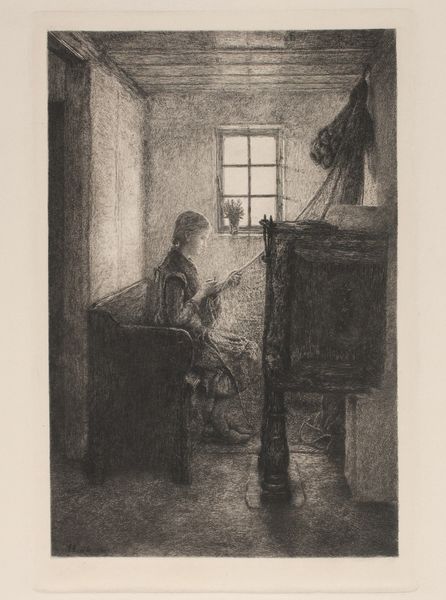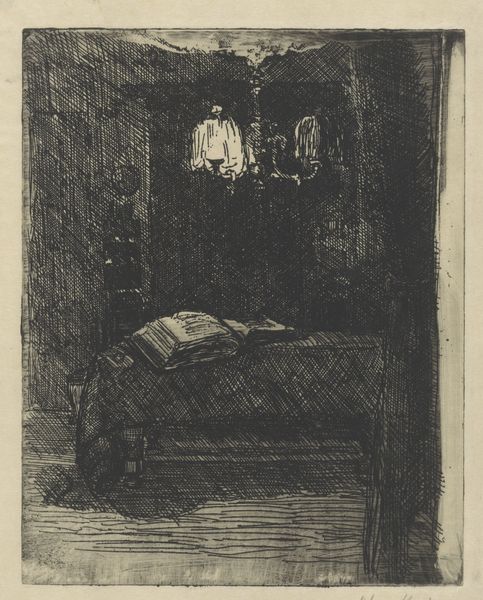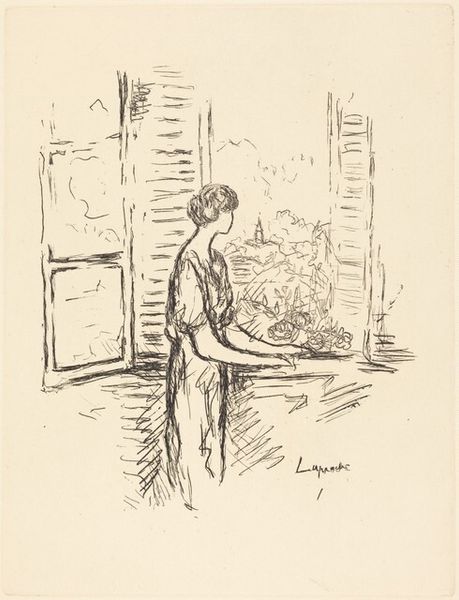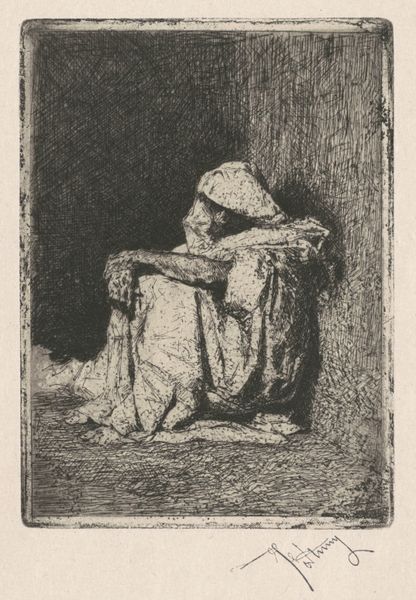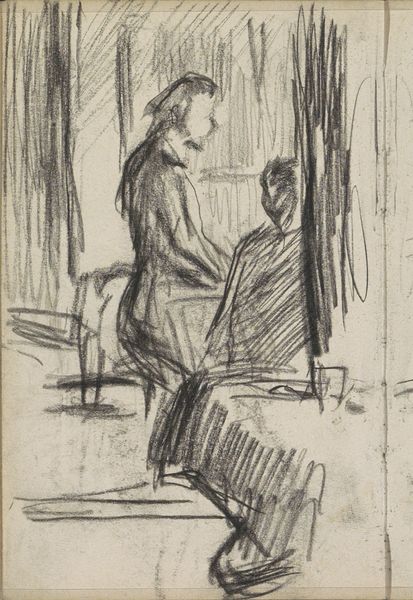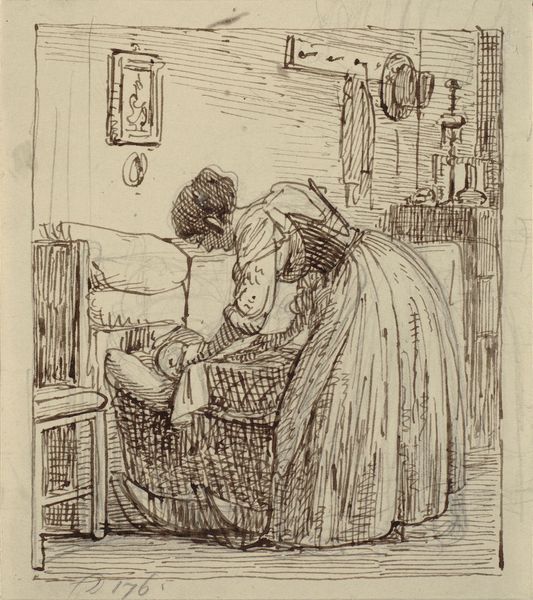
drawing, print, etching, paper
#
portrait
#
drawing
# print
#
etching
#
figuration
#
paper
#
england
#
genre-painting
Dimensions: 108 × 69 mm (image/plate); 332 × 243 mm (sheet)
Copyright: Public Domain
Editor: So, this is Theodore Roussel's etching, "Penelope, A Doorway Chelsea," created around 1888 or 1889. It's an image of a woman standing in a doorway. It feels very intimate, like we're catching a glimpse of a private moment. What strikes you about it? Curator: I am fascinated by the etching technique here. The marks on the plate reveal so much about the artist's process. Consider the availability of etching materials in late 19th century England: the acids, the metals, the paper. How were these acquired? Who produced them, under what labor conditions? The varying pressure used during the etching process highlights a direct relationship between the artist's hand and the final image. Editor: That’s a fascinating way to look at it. I was focused on the composition, but thinking about the materials... did the accessibility of certain materials shape artistic choices then? Curator: Absolutely. Cheaper, readily available materials would inevitably lead to wider experimentation and possibly challenge the very definition of “art.” The consumption of these materials also raises interesting questions about the relationship between art production and the burgeoning industrial economy. Do you think that Roussel challenged such boundaries, given his chosen material and subject matter? Editor: It makes you wonder, doesn't it? Showing an ordinary woman in a doorway – perhaps it was a subtle commentary on class, captured using materials more and more available at that time. Curator: Precisely! Even the printmaking itself—think about its accessibility compared to unique paintings, it opens dialogues about value, labour, and access to art within society. Editor: I'll never look at an etching the same way again. It's not just an image; it's a record of its own making, socially and materially.
Comments
No comments
Be the first to comment and join the conversation on the ultimate creative platform.

